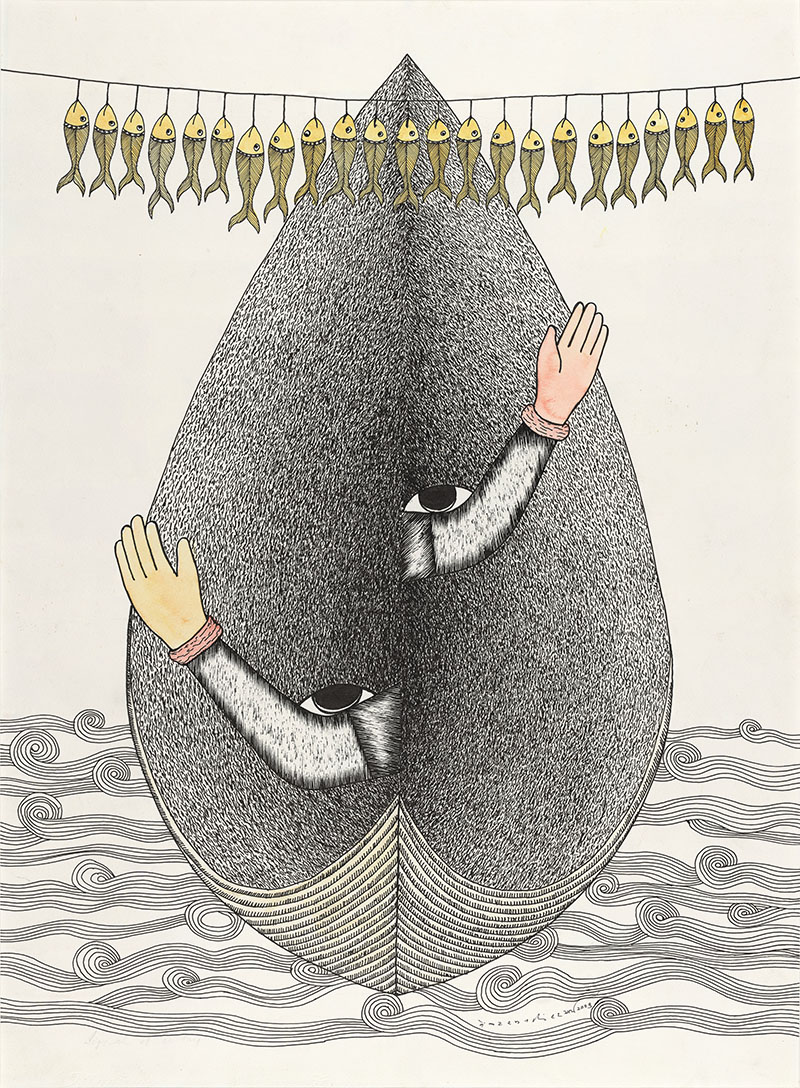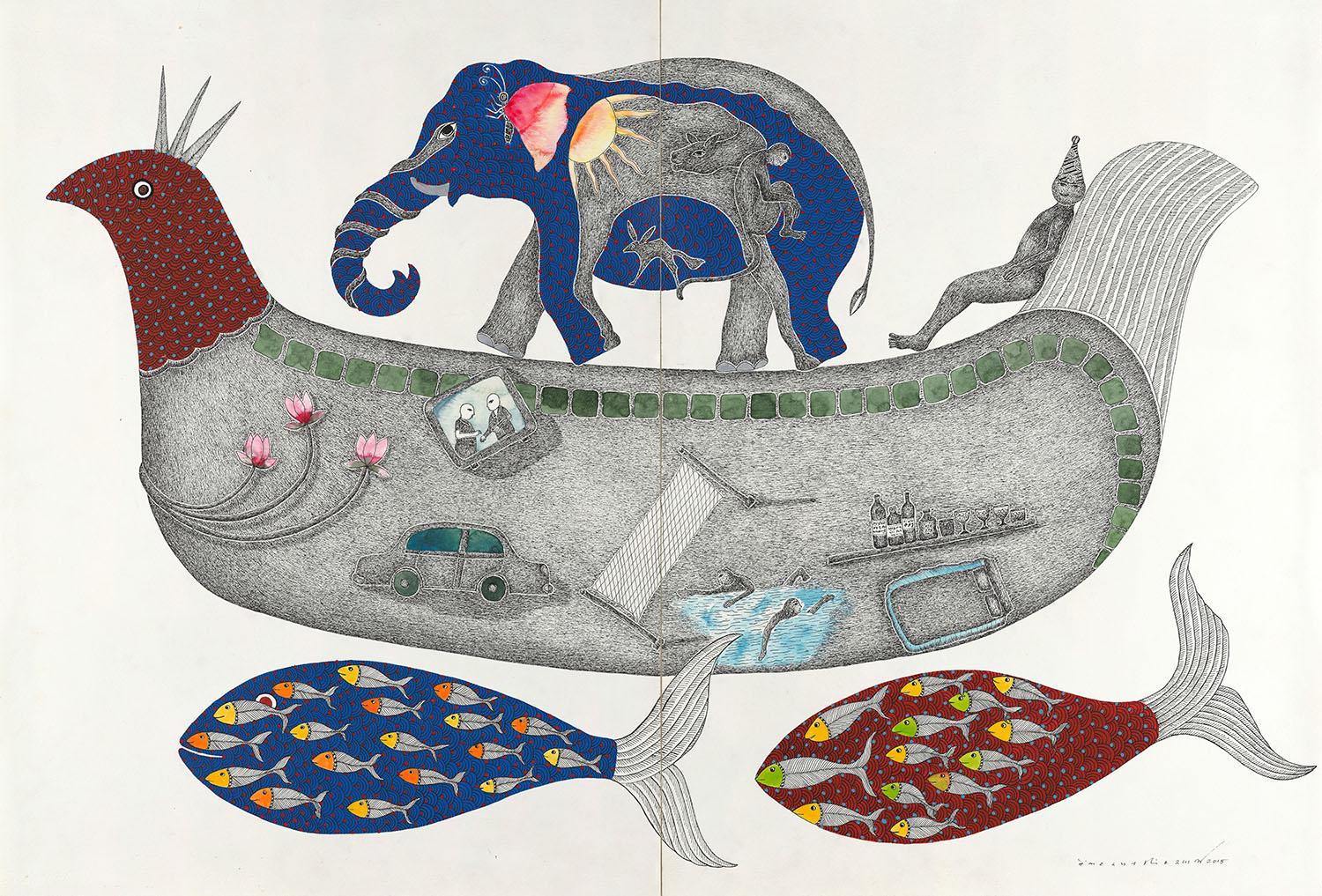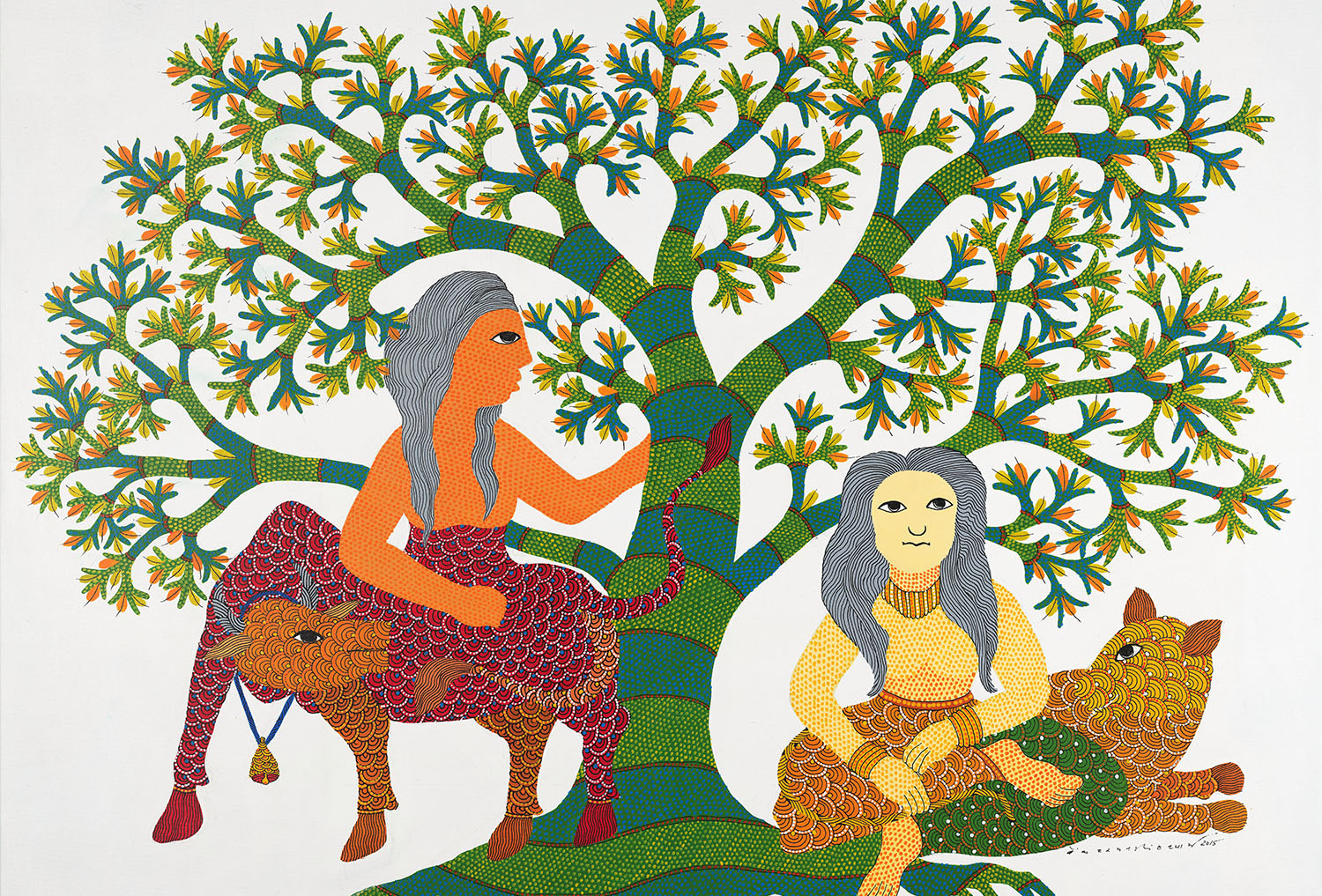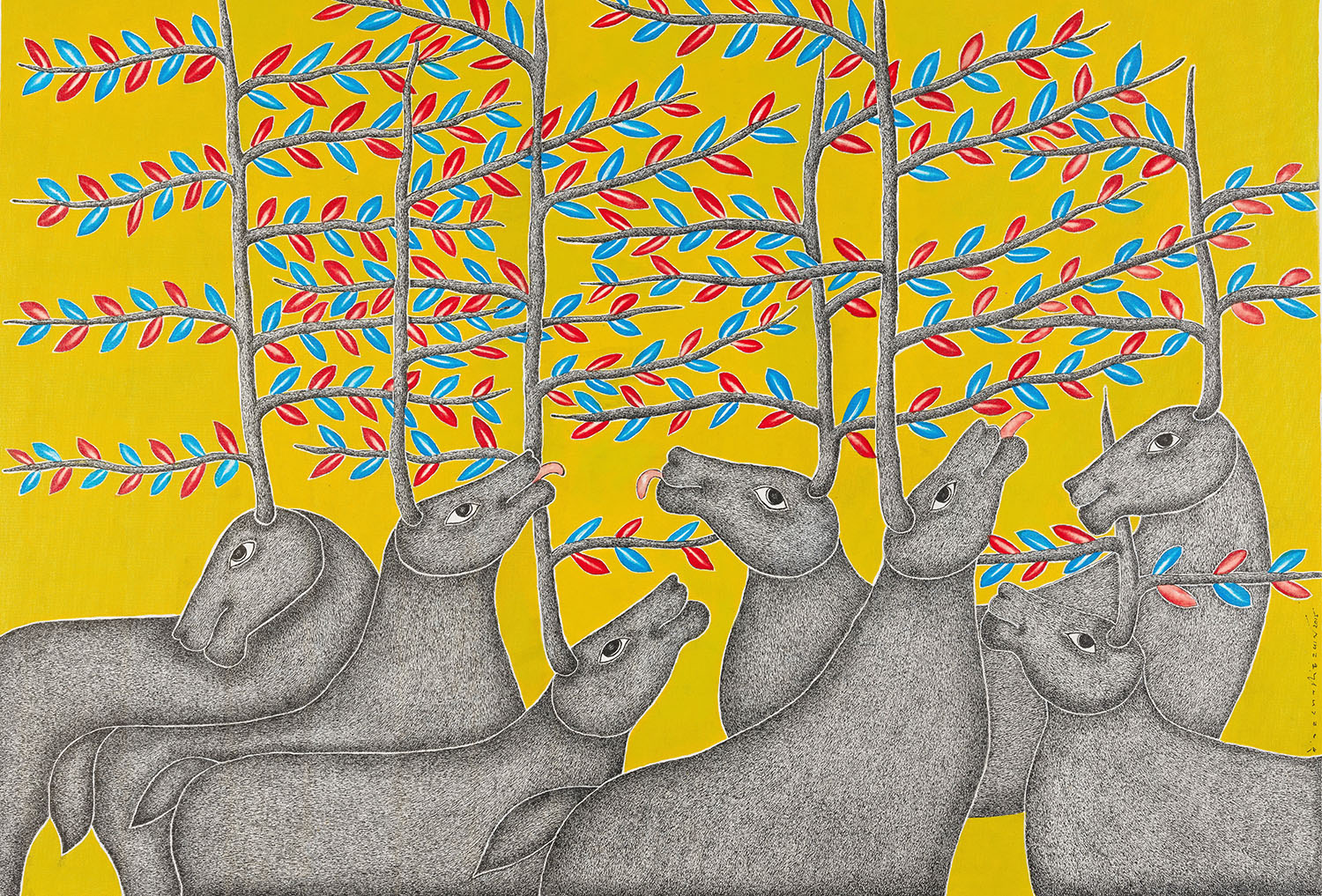A second-generation Pardhan-Gond artist, Venkat Raman Singh Shyam trained under his uncle, Jangarh Singh Shyam, and is seen as a practitioner of the Jangarh Kalam style of Gond painting. Shyam was born in the Pardhan-Gond community in the village of Sijhora, Madhya Pradesh. From an early age, he picked up the art practised in the community and was seen as a promising painter. At the age of thirteen, Jangarh Singh Shyam visited him in the village and seeing potential in his work, he took Shyam to Bhopal as an apprentice.
During Shyam’s apprenticeship (1988–91), Jangarh Singh Shyam insisted that he hone an individualistic approach towards painting and not copy. Shyam, thus, drifted away from images of flora and fauna that Jangarh specialised in as well as scenes from community life that many Gond artists depicted. Instead, he began with painting images of the goddess Khero Mai, the protector deity of his village and other Pardhan deities like Bara Deo and Dharti Lal. He experimented with form, subject matter and materials, using a wide range of colours from limestone and charcoal to oil and acrylic paints.
Before pursuing art professionally and full-time Shyam lived and worked in Bhopal and Delhi as a domestic help, rickshaw puller and signboard painter. Therefore, his paintings draw from his experiences in the world, along with current political issues, presented in Gond painting’s vocabulary. Aag (2010) depicted volcanic ash eruptions which stranded air travellers in Europe and works Attack, Signal, Rescue and Fruit-gun (2009) illustrated the 26/11 terrorist attacks in Mumbai. He also used pencils and charcoals, which had remained untouched by artists from the community until then, on account of their inauspiciousness. Later, following his work as a professional signboard artist, he incorporated bold visual language using bright, flat colours and broad diagonal bands that would be divided by black-and-white wavy stripes. These choppy lehers (waves) became a distinct feature of his work. He finessed the pointillism of Gond painting but at the same time drew figures that aspire to realism, eschewing the traditional elongations of Gond style. His landmark works include Mahadev-Gaura (2015), Life on Boat (2015) and Under the Tree (2015).










